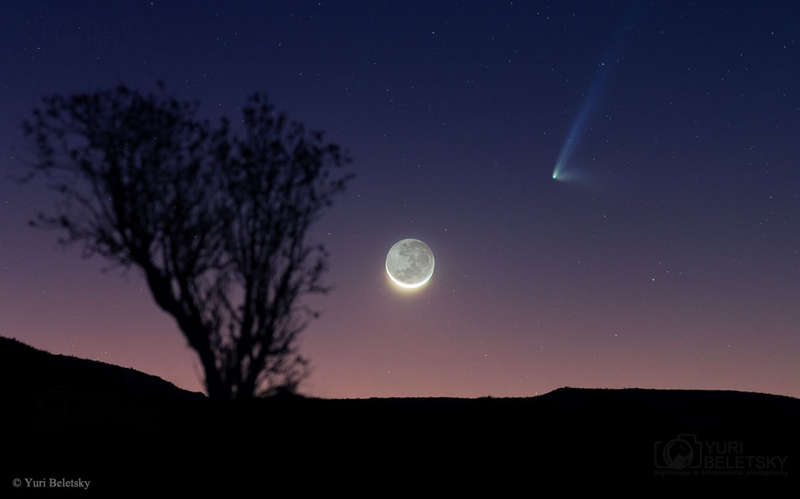
|
Explanation: A comet has brightened quickly and unexpectedly. Discovered last year, Comet C/2014 Q1 (PanSTARRS) is expected to be visible now for a few days to the unaided eye, just after sunset, from some locations. The comet rounded the Sun on July 6 and apparently has shed quite a bit of gas and dust. Today it is now as close as it will ever get to the Earth, which is another factor in its recent great apparent brightness and the large angular extent of its tails. In the featured image taken two days ago, Comet PanSTARRS is seen sporting a short white dust tail fading to the right, and a long blue ion tail pointing away from the recently set Sun. A crescent moon dominates the image center. Tomorrow, Comet PannSTARRS will pass only 7 degrees away from a bright Jupiter, with even brighter Venus nearby. Due to its proximity to the Sun, the comet and its tails may best be seen in the sunset din with binoculars or cameras using long-duration exposures.
APOD Editor to Speak: Saturday, August 8 at
Keweenaw Science & Engineering
Festival
|
January February March April May June July August September October November December |
| ||||||||||||||||||||||||||||||||||||||||||||||||
NASA Web Site Statements, Warnings, and Disclaimers
NASA Official: Jay Norris. Specific rights apply.
A service of: LHEA at NASA / GSFC
& Michigan Tech. U.
Based on Astronomy Picture
Of the Day
Publications with keywords: comet
Publications with words: comet
See also:
- APOD: 2025 November 17 Á Comet Lemmons Wandering Tail
- APOD: 2025 September 30 Á Comet Lemmon Brightens
- APOD: 2025 September 29 Á Two Camera Comets in One Sky
- APOD: 2025 September 26 Á A SWAN an ATLAS and Mars
- APOD: 2025 September 18 Á Comet C/2025 R2 SWAN
- APOD: 2025 September 16 Á New Comet SWAN25B over Mexico
- APOD: 2025 July 7 Á Interstellar Comet 3I ATLAS
